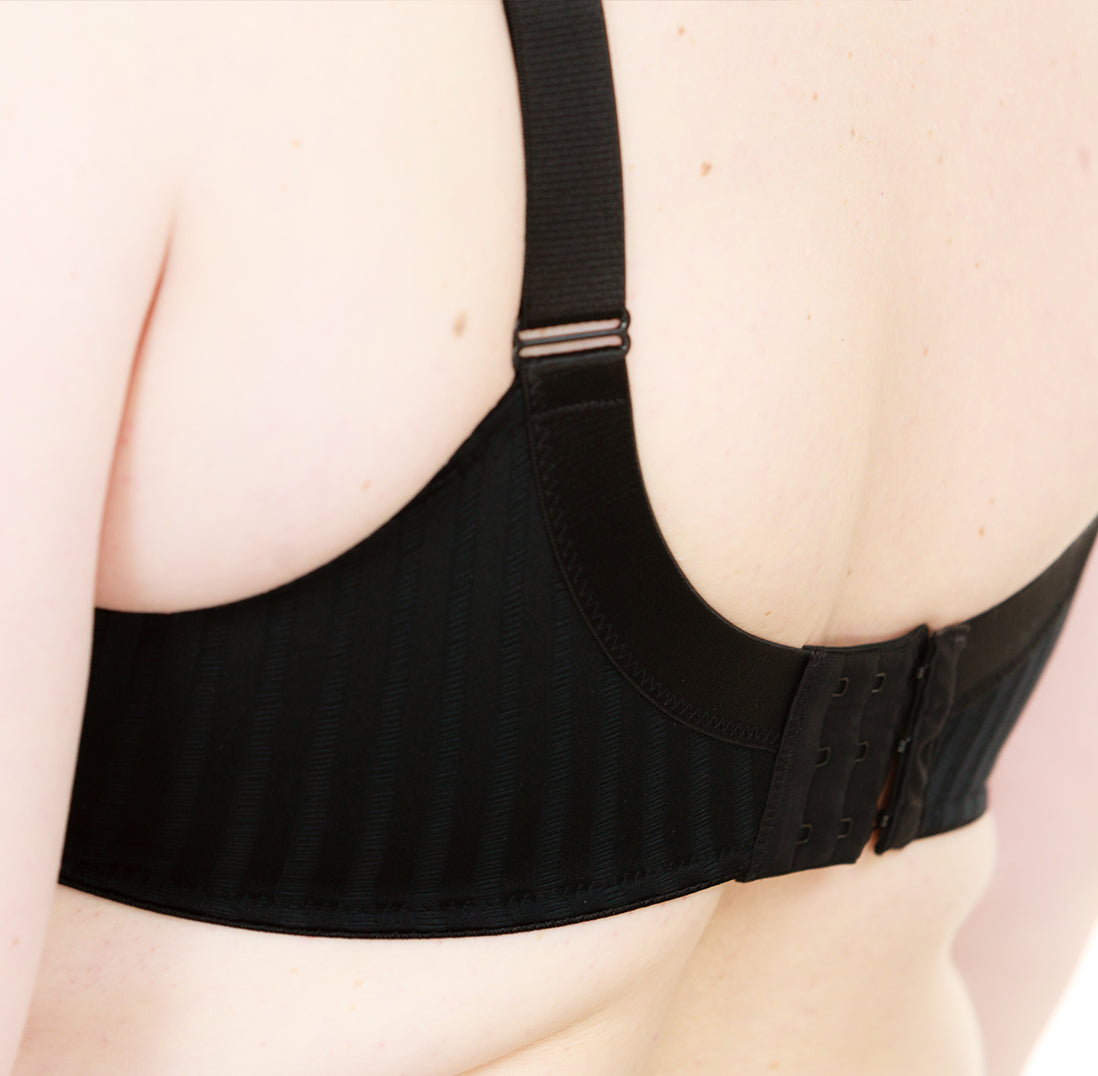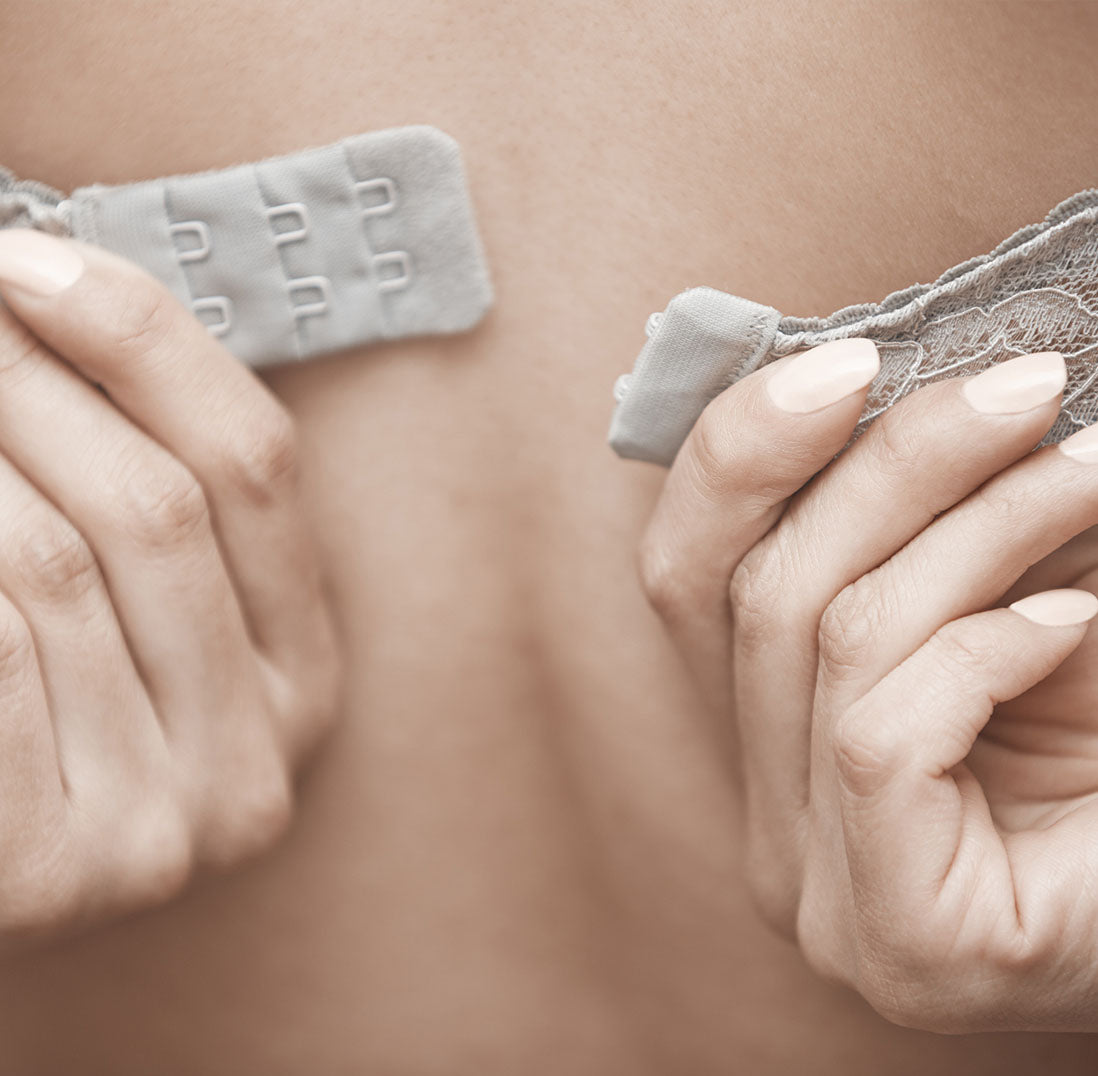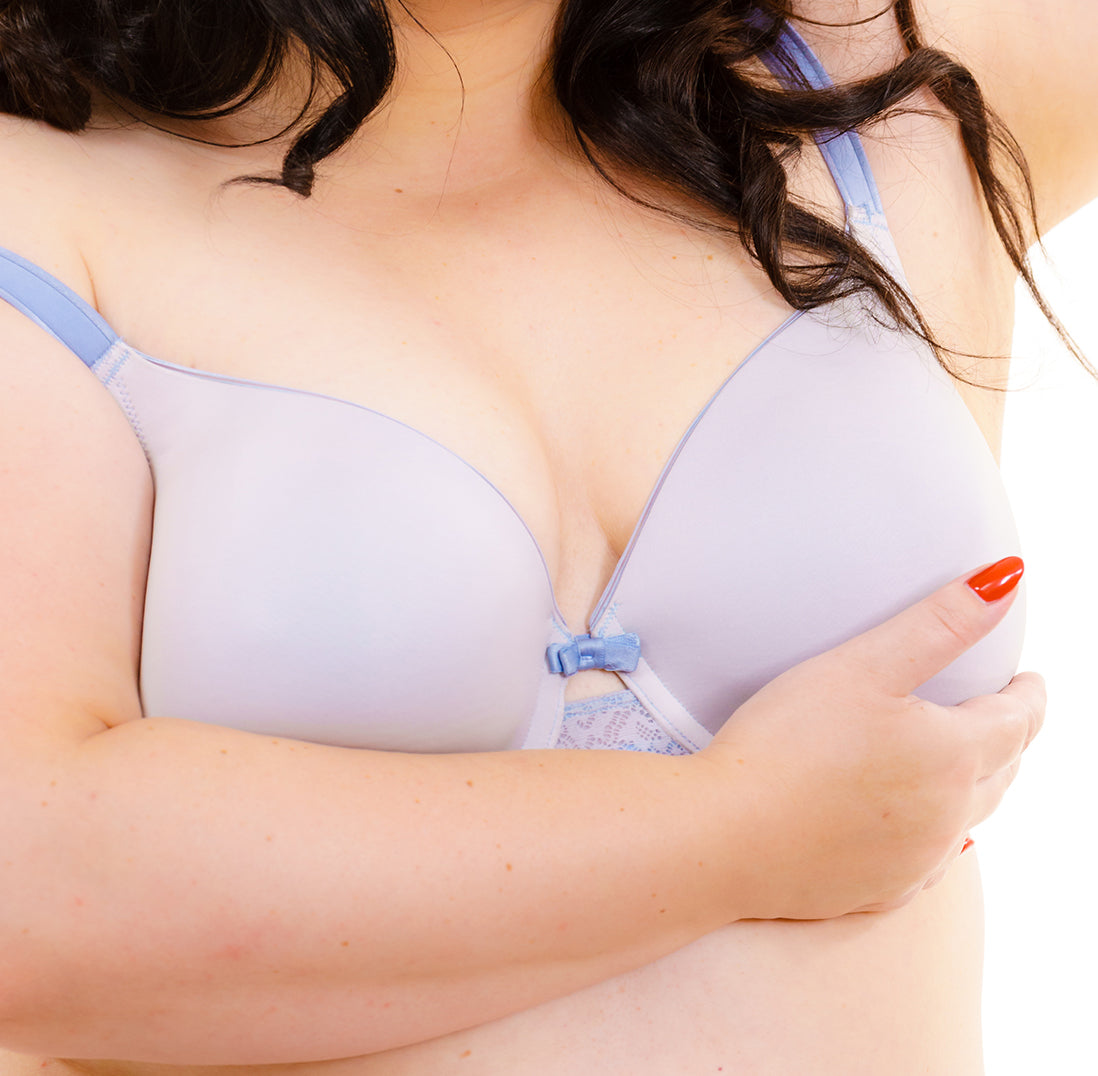Bras can be confusing. After all, it’s not like there’s a class that teaches you everything you need to know.
Most women learned which bra sizes work by trial and error as they grew up. In this post, we’re going to take some of the top bra-fit questions and answer them.

How should your bra fit?
There are a few quick tests that you can do to see if your bra fits the way that it should. One place to start is just by putting on a tight shirt and looking in the mirror.
Take notice of the cups and the back. Are the cups sticking out? Is the back causing bulges?
If so, it’s time to think about adjusting your size. Another test is just to take your bra off at the end of the day and look for any red marks.
Take note of how long it takes for them to disappear. If they’re light in color and go away fairly quickly that’s normal. If they are deep red or purple and stay for hours that’s a sign that something is too tight.
Here’s how each part of your bra should fit:
- The center gore. This is the space in between the cups where the underwire meets. It should lie flat against your breastbone, separating your breasts. If the underwire is resting on top of your breast tissue it means that your cups are too small.
- The cups should encapsulate all of your breast tissue without it spilling over and without there being any gaps. Your underwire should not be on top of your breast tissue and there shouldn't be a gap between the wire and your breast. It shouldn’t be digging in anywhere either. Make sure that your breast is centered inside of the cup. You may need to do the “scoop and lift” so that your breast tissue is in the right place.
- The band. Your band should be snug but it shouldn’t be super tight. It should fit properly while on the loosest hook. This way you have room to adjust when it stretches. Does it leave painful marks on your skin even when on the last hook? That’s a sign that it’s too small. Lift your arms and see if it comes up. If it does then it’s too loose. Bands will naturally stretch over time so if you can adjust it to be tighter, great, but if not it’s time for a new bra. Is it really important that your band is tight enough? Yes! Your band does 80-90% of the work when it comes to supporting, so it’s crucial that it fits well.
- The straps. They should be snug, but like the band, not terribly tight. You should be able to slip two fingers underneath, but that’s it. Once your straps are adjusted check the back of your bra and make sure that they’re not pulling the band up. Your straps shouldn’t be digging into your shoulders either. Remember, support is the band’s main job, not the straps. You shouldn’t be relying on them to hold everything up.

How do you know if your bra is too small?
There are some telltale signs if your bra is too small:
- Your breasts are spilling out of your cup.
- Your band is creating unnecessary bulges. If you have some back fat that’s ok, but your bra band shouldn’t be making mountains out of molehills.
- Your wires aren’t in the right place. They shouldn’t be on top of your breast tissue, and the center should be flat against your breastbone.
- It’s painful. A little discomfort is one thing, but actual pain means something is wrong.
Why does my bra hurt my sides?
Check your underwire and see if it’s digging into the breast tissue on the sides by your armpit. Remember, your cups should hold your breast tissue entirely and if they’re not it means that you need a bigger cup size.
Also, check your bra for an exposed underwire. If your bra is too worn the underwire may be poking through which means it’s time for a new bra.
Take the opportunity to re-measure yourself if it’s been a while or if your weight has fluctuated. Wearing the correct size makes all of the difference when it comes to comfort and how your bra looks.
Why does my bra hurt under my breasts?
There are a few reasons that you may be experiencing pain underneath your breasts.
- Your band is too tight and the underwire is digging in.
- The fabric itself is irritating your skin.
- Your bra needs to be washed. Bras are great for harboring sweat, dirt, and bacteria which can irritate sensitive skin. Make sure that you’re washing your bras regularly.
- Your band is too big and it’s causing the underwire to move around and chaff.
- You have a yeast infection. Yes, you can get a yeast infection under your breasts. If the skin underneath your breasts has a red, raised, and shiny rash it could be yeast overgrowth. See your doctor to be sure.

Can tight bras cause problems?
Yes! A bra that’s too tight does more than make you feel uncomfortable. Here are some of the most-known issues:
- It can damage your skin.
- It can disrupt circulation.
- Straps that are too tight can cause permanent grooves in the shoulders.
- It can make you a shallow rib breather. This means that it can restrict the movement of your ribs causing you to breathe more shallow than normal. This can impact the amount of oxygen and carbon dioxide in your blood. It can also cause your body to recruit other muscles in your neck to help you breathe. This can cause neck pain.
- It can disrupt digestion. A bra that’s too tight along the rib cage can put pressure on the diaphragm affecting the digestive process.
Concluding Thoughts
A bra that fits well is so important, not just for your appearance, but for your health. Take some time today and make sure that yours is serving you the way that it should.
For more, check out our Bra Fit Guide.
Lift, Shape, and Support With Comfort and Style



